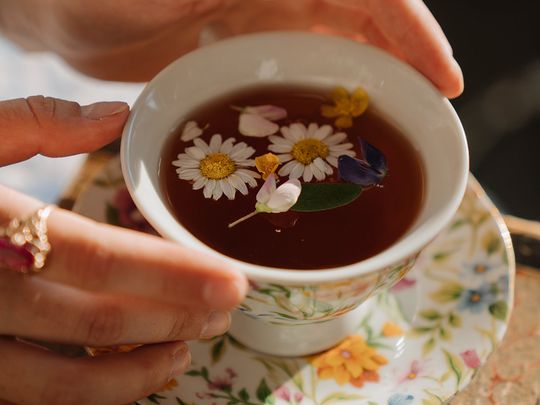
Fancy a cup of tea? You’ll be spoilt for choice in today’s puzzle.
Click start to play the Word Search, where you’ll find a range of teas, from ‘chamomile’ to ‘ginger’.
Older than even the writing system and formal medicine, tea has graced homes and hearths for centuries. We learn a little more about the different kinds of tea mentioned in today’s puzzle, and how ancient history played a role in the way they’re consumed today:
1. Chamomile
In ancient Egypt, chamomile was considered to be a gift from the deities. It was commonplace for people to offer the flower to the sun deity Ra. The body of Ramses II was anointed with it, and even King Tutankhamen’s sandals were decorated with the bloom. The ancient Greeks and Romans loved chamomile, as well, for its fruity aroma and its promise of calm. It was used medicinally in most cultures, by being crushed and made into tea, to treat skin conditions and other ailments. In modern times, it’s been studied as a remedy for anxiety disorder, because it is a natural sedative, possibly due to a compound in it, called apigenin.
2. Eucalyptus
The oil from the eucalyptus tree is well known for its use as over-the-counter cough and cold products to relieve congestion; it’s also used for its refreshing and antiseptic properties. But the first people to use eucalyptus in tea form, were the aboriginal people of Australia – they did it to bring down fever. The plant was then introduced to the rest of the world in the 18th century, and it was quickly adopted by traditional Chinese and ayurveda medicine. Its leaves have a refreshing, minty taste, so teas made from eucalyptus offer an invigorating boost. Many cultures also pair this tea with echinacea, when they want to improve their immunity.
3. Chrysanthemum
As a vital part of traditional Chinese medicine for thousands of years, chrysanthemum is no stranger to Asia. It was first cultivated in China in the 15th century BC, and was considered a symbol of nobility and integrity. During the Song dynasty, it was brewed as a herbal tea and popularised, and then used for centuries to treat respiratory issues, blood pressure irregularities and as a calming, soothing beverage. In places like Korea, Singapore, and Japan, chrysanthemum tea is still consumed frequently, even in the summer, when it’s made into a cool, refreshing drink.
Do you like any of these teas? Play today’s Word Search and tell us at games@gulfnews.com.








